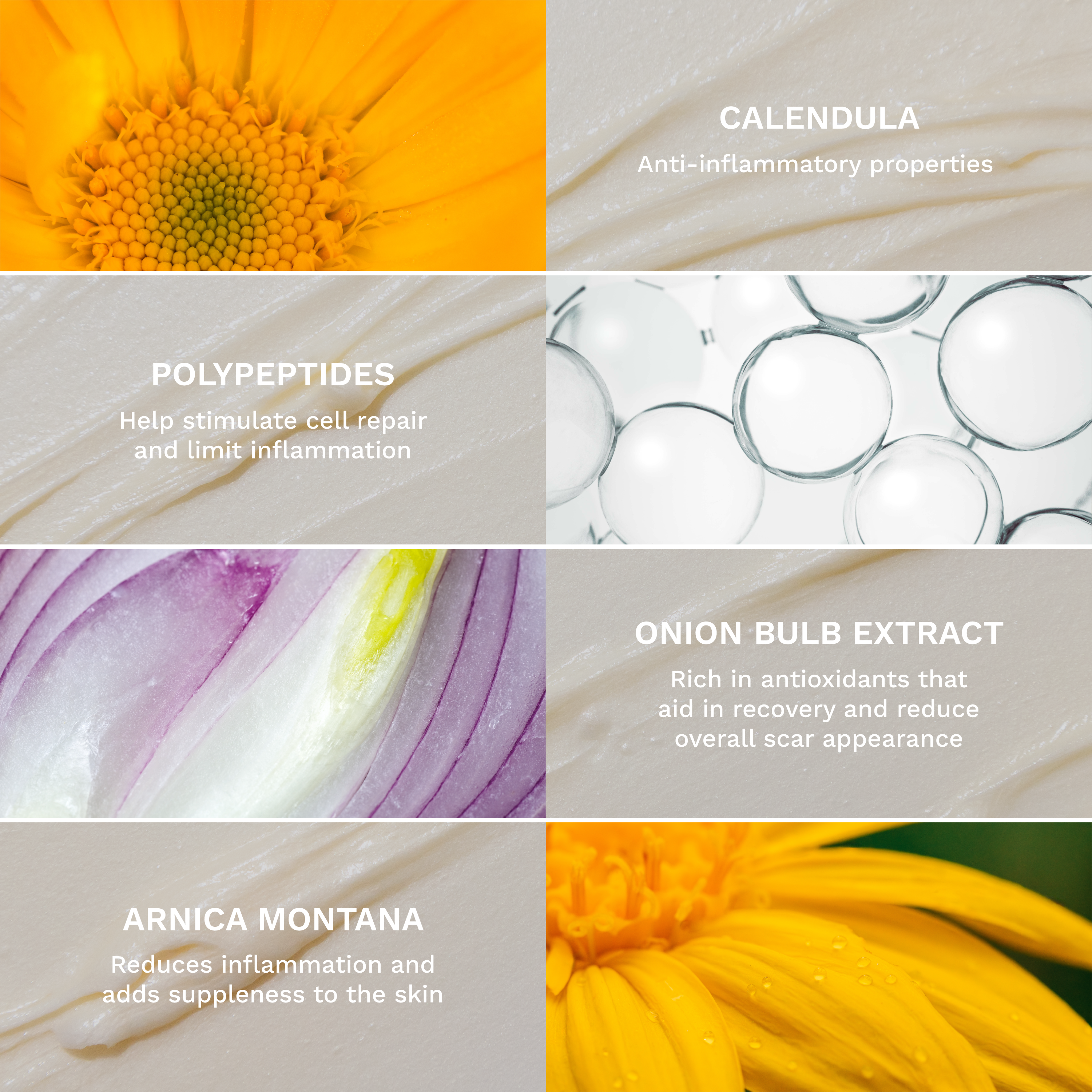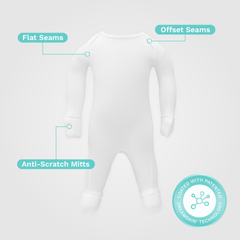Stretch marks, also known as striae, are a common skin concern that affects various areas of the body. While the color of stretch marks can indicate their stage of healing rather than being distinct types, there are several terms used to describe different characteristics of these marks. Today, we’re going to cover the types of stretch marks – this will be especially helpful if you’re wondering “what type of stretch marks do I have,” and how to treat stretch marks of differing types. Let’s dive right in and answer your questions.
What Type of Stretch Marks Do I Have?
Stretch marks can be classified in a few different ways: based on what caused them, and what form they take. Let’s look a little closer.
Types of Stretch Marks (By Cause)
Thin & Depressed: Striae Atrophicans
Striae atrophicans refer to stretch marks characterized by thinned and depressed skin. These marks may appear as indented streaks, and they are often associated with weight loss or rapid growth during adolescence.
Pregnancy-Related: Striae Gravidarum
Striae gravidarum, commonly known as pregnancy stretch marks, develop during pregnancy due to the rapid stretching of the skin. They typically appear on the abdomen, breasts, buttocks, and thighs.
Muscle Growth & Hormonal: Striae Distensae
Striae distensae are stretch marks caused by the stretching of the skin, often associated with weight gain, muscle growth, or hormonal changes. These marks can occur in both men and women and commonly appear on the abdomen, hips, thighs, and breasts.
Types of Stretch Marks (By Color)
Red or Pink: Striae Rubrae
Striae rubrae are characterized by red or pinkish stretch marks, indicating an active phase of tissue inflammation and healing. These marks are relatively new and more responsive to treatment.
White or Silver: Striae Albae
Striae albae are mature stretch marks that have faded to a whitish or silvery color. They are the result of collagen and elastin breakdown in the skin. Although they are less responsive to treatment, some creams (like our Stretch Mark Cream) can improve their texture, and minimize the visibility of these marks, allowing for a more even skin tone.
Dark Brown or Black: Striae Nigra
Striae nigra are less common and are characterized by dark brown or black stretch marks. They are usually found in people with darker skin tones. Using a good cream with support for hyperpigmentation is crucial for getting these stretch marks to respond.
Blue or Dark Blue: Striae Caerulea
Striae caerulea are rare and present as dark blue stretch marks. They are often associated with specific medical conditions (Cushing’s, Marfan, EDS, Adrenal Hyperplasia… etc.) and can be challenging to treat. Consulting a dermatologist is crucial for managing this type of stretch mark effectively.
What Do Different Color Stretch Marks Mean?
We discussed this a bit in a previous blog post (Red vs. White Stretch Marks: What Does The Color of Your Stretch Marks Mean?), but for a quick recap, here’s what the colors typically mean:
|
1)
|
Some people experience a bright pink stage – this is when the damage first happens. You’ll likely be extremely itchy during this stage and your skin may be warm and inflamed. |
| 2) | Red and purple means that your stretch marks are new. At this stage, your skin has already begun healing and you should start using a cream (like our Stretch Mark Cream) as soon as possible. |
| 3) | The next stage is the light and shiny stage, where the marks are completely healed, but not yet restructured. |
| 4) | Over time, your stretch marks will fade and restructure to become closer to your normal skin tone, but they’ll always be a bit shinier than your normal skin tissue. |
How To Treat Stretch Marks
Stretch marks of all types tend to react well to moisturization and products that help boost collagen and elastin. This is why we developed our Stretch Mark Cream with those things in mind. Understanding the science behind stretch marks can help us support these scars as they heal – after all, that’s what they are!
So, if you’re ready to start supporting your stretch marks and want to see some improvement, pick up a bottle of our Stretch Mark Cream and start using it today.

























Leave a comment